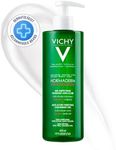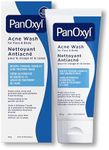Buying Guide for the Best Acne Treatment For Teens
Choosing the right acne treatment for teens can feel overwhelming because there are so many options available, from creams and cleansers to oral medications. The best approach is to understand your skin type, the severity of the acne, and any sensitivities or allergies you might have. It's important to remember that what works for one person may not work for another, so patience and a bit of trial and error are often necessary. Always start with gentle treatments and only move to stronger options if needed, and consider consulting a dermatologist for persistent or severe cases.Active IngredientsActive ingredients are the main components in acne treatments that help clear up the skin. Common ones include benzoyl peroxide, salicylic acid, sulfur, and retinoids. Each works differently: benzoyl peroxide kills bacteria, salicylic acid helps unclog pores, sulfur dries out the skin, and retinoids speed up cell turnover. If you have mild acne, start with lower concentrations of benzoyl peroxide or salicylic acid. For sensitive skin, look for products with sulfur or lower-strength ingredients. If over-the-counter options don’t help, a dermatologist might recommend prescription-strength retinoids. Your skin’s reaction and the type of acne you have should guide your choice.
Formulation TypeFormulation type refers to the way the treatment is delivered, such as gels, creams, lotions, cleansers, or spot treatments. Gels and lotions are often lighter and better for oily or combination skin, while creams are more moisturizing and suitable for dry or sensitive skin. Cleansers are good for treating larger areas, while spot treatments are best for targeting individual pimples. Think about your skin type and where your acne appears most when choosing a formulation.
Skin SensitivitySkin sensitivity is how easily your skin reacts to products, which is especially important for teens whose skin can be more delicate. If you notice redness, burning, or peeling, you may need a gentler product or one labeled as 'for sensitive skin.' Start with lower concentrations and use products less frequently at first to see how your skin responds. If you have a history of allergies or eczema, always check the ingredient list and consider patch testing a small area before full use.
Severity of AcneThe severity of your acne—whether it’s occasional pimples, moderate breakouts, or severe cystic acne—should guide your treatment choice. Mild acne often responds well to over-the-counter products with lower concentrations of active ingredients. Moderate acne may need a combination of treatments, like a cleanser and a spot treatment. Severe or cystic acne usually requires a dermatologist’s help and possibly prescription medications. Assess how widespread and persistent your acne is before deciding on a treatment.
Non-Comedogenic and Fragrance-FreeNon-comedogenic means the product is formulated not to clog pores, which is crucial for acne-prone skin. Fragrance-free products are less likely to irritate sensitive skin or cause allergic reactions. Always look for these labels, especially if you have sensitive or easily irritated skin. Choosing non-comedogenic and fragrance-free options can help prevent new breakouts and reduce irritation.
Ease of Use and Routine CompatibilityEase of use refers to how simple it is to fit the treatment into your daily routine. Some products require multiple steps or frequent application, while others are quick and easy. If you have a busy schedule or tend to forget skincare steps, look for treatments that are easy to apply and don’t require a lot of time. The best treatment is one you can use consistently, so consider your habits and lifestyle when making a choice.















